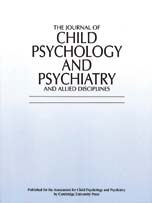The Development and Well-Being Assessment: Description and Initial Validation of an Integrated Assessment of Child and Adolescent Psychopathology
Published online by Cambridge University Press: 03 October 2000
Abstract
The Development and Well-Being Assessment (DAWBA) is a novel package of questionnaires, interviews, and rating techniques designed to generate ICD-10 and DSM-IV psychiatric diagnoses on 5–16-year-olds. Nonclinical interviewers administer a structured interview to parents about psychiatric symptoms and resultant impact. When definite symptoms are identified by the structured questions, interviewers use open-ended questions and supplementary prompts to get parents to describe the problems in their own words. These descriptions are transcribed verbatim by the interviewers but are not rated by them. A similar interview is administered to 11–16-year-olds. Teachers complete a brief questionnaire covering the main conduct, emotional, and hyperactivity symptoms and any resultant impairment. The different sorts of information are brought together by a computer program that also predicts likely diagnoses. These computer-generated summary sheets and diagnoses form a convenient starting point for experienced clinical raters, who decide whether to accept or overturn the computer diagnosis (or lack of diagnosis) in the light of their review of all the data, including transcripts. In the present study, the DAWBA was administered to community (N = 491) and clinic (N = 39) samples. There was excellent discrimination between community and clinic samples in rates of diagnosed disorder. Within the community sample, subjects with and without diagnosed disorders differed markedly in external characteristics and prognosis. In the clinic sample, there was substantial agreement between DAWBA and case note diagnoses, though the DAWBA diagnosed more comorbid disorders. The use of screening questions and skip rules greatly reduced interview length by allowing many sections to be omitted with very little loss of positive information. Overall, the DAWBA successfully combined the cheapness and simplicity of respondent-based measures with the clinical persuasiveness of investigator-based diagnoses. The DAWBA has considerable potential as an epidemiological measure, and may prove to be of clinical value too.
- Type
- Research Article
- Information
- The Journal of Child Psychology and Psychiatry and Allied Disciplines , Volume 41 , Issue 5 , July 2000 , pp. 645 - 655
- Copyright
- © 2000 Association for Child Psychology and Psychiatry
- 1322
- Cited by


